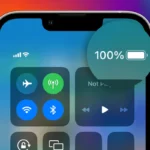macOS Ventura 13.7.7 brought security updates to Mac users, but some experienced unexpected issues after installation. Common problems include app crashes, Wi-Fi connectivity drops, and slower system performance. Most macOS Ventura 13.7.7 problems can be resolved through simple troubleshooting steps like resetting system preferences, clearing cache files, or reinstalling problematic applications.
Apple designed macOS Ventura 13.7.7 as a maintenance update for users who haven’t upgraded to newer operating systems. The update focuses on security patches rather than new features. However, some Mac users found their systems behaving differently after the installation completed.
Understanding which fixes work best saves time and prevents data loss. The right approach depends on the specific problem affecting each Mac. Some solutions require only a few clicks, while others need more detailed steps to restore normal operation.
How To Fix macOS Ventura 13.7.7 Problems
macOS Ventura 13.7.7 includes important security updates and bug fixes, but some users may still encounter issues. Here’s how to troubleshoot and resolve common problems:
1. Backup Your Data
Before attempting any fixes, ensure your data is backed up using Time Machine or another backup solution to prevent data loss.
2. Address Unexpected App Terminations or System Crashes
The 13.7.7 update fixes issues related to app or system crashes caused by memory handling bugs. If you still experience crashes:
- Restart your Mac.
- Check for any app updates.
- If issues persist, consider reinstalling macOS Ventura 13.7.7 to ensure all patches are correctly applied.
3. Fix Time Machine Backup Issues
If Time Machine fails to back up or restore:
- Ensure your backup disk is connected and has sufficient space.
- Restart your Mac and backup disk.
- Delete corrupted backup snapshots if necessary.
- Reformat the backup disk as a last resort.
4. Resolve Installation or Update Hang-Ups
If the update process hangs (e.g., spinning wheel or prolonged optimization screen):
- Force restart your Mac.
- Boot into Safe Mode and try the update again.
- If problems continue, reinstall macOS Ventura 13.7.7 from macOS Recovery.
5. Reinstall macOS Ventura 13.7.7
If problems persist after troubleshooting:
- Restart your Mac and boot into macOS Recovery (hold Command + R during startup).
- Choose “Reinstall macOS” and follow the prompts.
- This will reinstall the OS without deleting your data, but a backup is recommended.
6. Use Community Tools for Unsupported Macs
If your Mac is not officially supported but you want to run Ventura 13.7.7, tools like OpenCore Legacy Patcher can help install the OS with some limitations. Use with caution and back up your data first.
By following these steps, you can resolve most issues related to macOS Ventura 13.7.7. For detailed troubleshooting or persistent issues, visiting Apple Support or community forums is recommended.
Key Takeaways
- Most macOS Ventura 13.7.7 issues stem from corrupted cache files or conflicting system preferences
- Simple troubleshooting methods like restarting in Safe Mode often resolve common problems quickly
- Users should backup their data before attempting advanced fixes to prevent potential data loss
Frequently Asked Questions
Users often face similar issues when working with macOS Ventura 13.7.7. These problems range from slow performance and app crashes to installation failures and compatibility errors.
What steps can be taken to resolve performance issues after updating to macOS Ventura 13.7.7?
Users should restart their Mac after the update completes. This clears temporary files and resets system processes.
Checking Activity Monitor helps identify apps using too much CPU or memory. Users can quit these apps to improve speed.
Clearing cache files often fixes slowdowns. Users can delete cache files from the Library folder or use cleaning software.
Free disk space improves performance. Users should delete old files and empty the Trash to make room.
Resetting NVRAM can fix startup and performance problems. Users hold Option + Command + P + R while starting their Mac.
Is it advisable to upgrade to macOS Ventura 13.6.7 prior to the 13.7.7 version, and what are the implications?
Users do not need to install 13.6.7 before 13.7.7. Apple allows direct updates to the latest version.
Skipping intermediate versions saves time and disk space. The 13.7.7 update includes all fixes from previous versions.
Some users prefer step-by-step updates for older Macs. This approach can prevent compatibility issues on aging hardware.
Direct updates to 13.7.7 work fine for most users. Apple tests these updates to ensure they install properly.
What are the common solutions for errors encountered in macOS Ventura 13.7.7?
Restarting the Mac fixes many temporary errors. Users should try this first before other solutions.
Running First Aid in Disk Utility repairs disk errors. Users can access this tool from Applications > Utilities.
Checking system logs helps identify specific problems. Users open Console app to view error messages.
Resetting permissions fixes access errors. Users can do this through Terminal or third-party tools.
Safe Mode helps isolate software conflicts. Users hold Shift while starting their Mac to enter Safe Mode.
How can one repair a damaged macOS Ventura 13.7.7 installer?
Users should delete the corrupted installer from Applications folder. Then they download a fresh copy from the App Store.
Clearing download cache helps when installers fail repeatedly. Users can reset the App Store cache through Terminal.
Using a different network sometimes fixes download issues. Corrupted downloads often result from poor internet connections.
Creating a bootable installer provides a backup option. Users can make this with a USB drive and Terminal commands.
Recovery Mode offers built-in repair tools. Users hold Command + R while starting to access these utilities.
Are there any troubleshooting procedures for app compatibility on macOS Ventura 13.7.7?
Users should update incompatible apps to their latest versions. Developers often release fixes for new macOS versions.
Checking app compatibility lists helps before updating. Users can find these on developer websites or Apple’s support pages.
Running apps in compatibility mode sometimes works. Users right-click the app and check compatibility settings.
Rosetta 2 helps older Intel apps run on Apple Silicon Macs. Users can install this through System Settings.
Contacting app developers provides the best long-term solution. They can confirm compatibility and provide updates.
How can users recover from a failed macOS Ventura 13.7.7 installation?
Recovery Mode lets users reinstall the operating system. Users hold Command + R while starting their Mac.
Time Machine backups restore the system to before the failed update. Users can access this through Recovery Mode.
Internet Recovery downloads a fresh system copy. Users hold Option + Command + R for this option.
Disk Utility can repair drive errors that cause installation failures. Users run this before attempting another install.
Safe Mode helps complete interrupted installations. Users hold Shift while starting to enter this mode.







